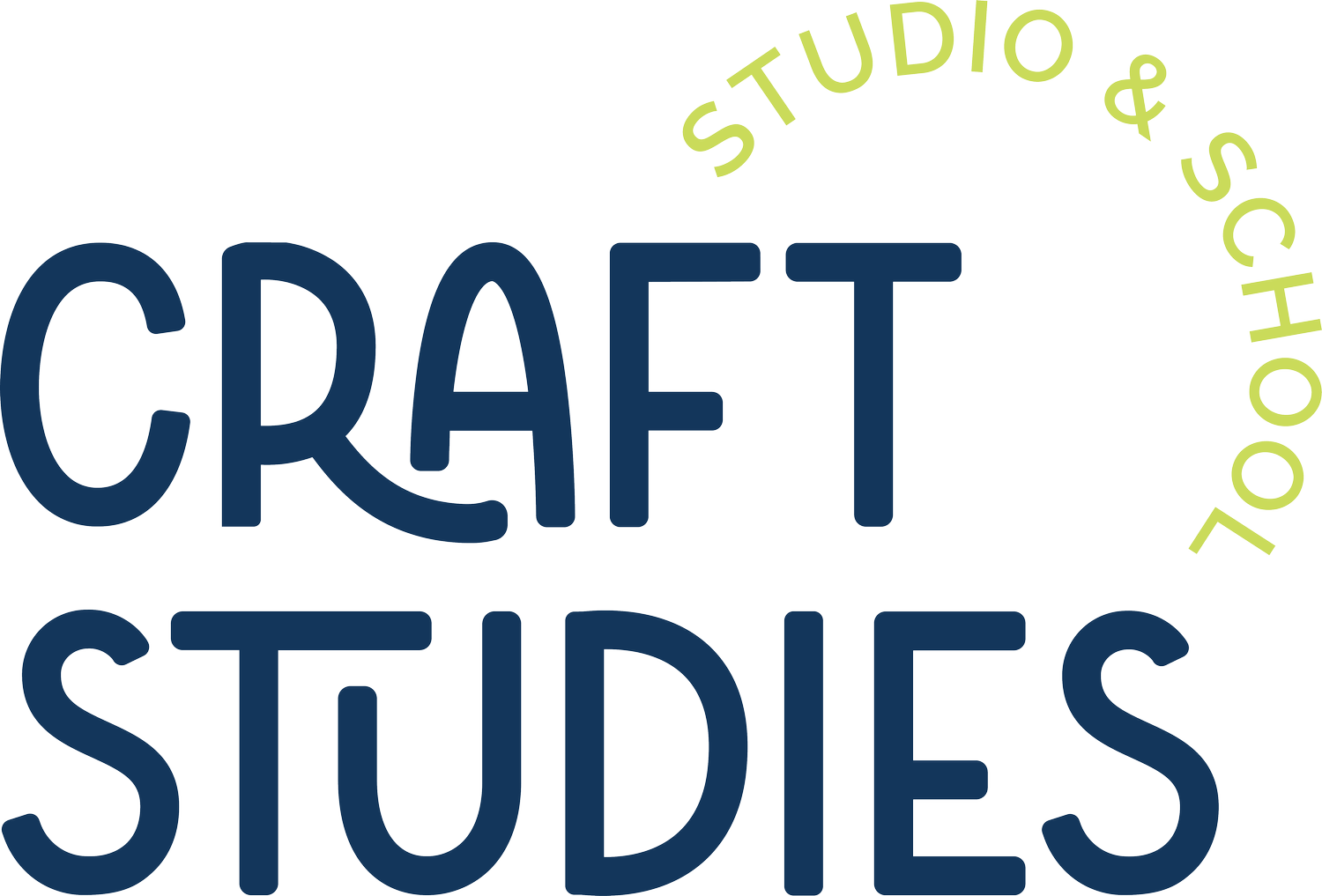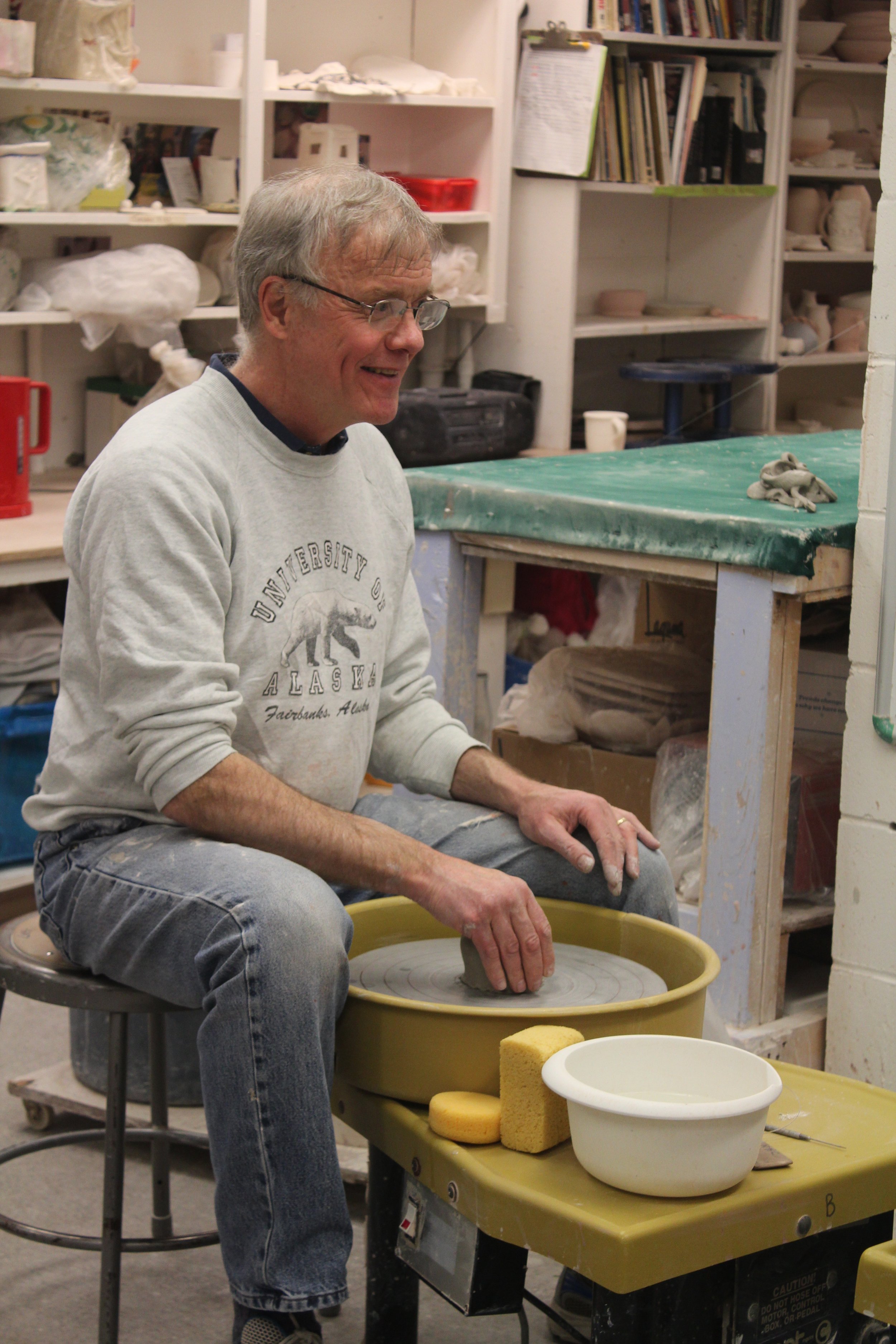Tim McCosker
Tim brings many years of experience of teaching and design to his work with students. He has a Master’s Degree in Education and has taught pottery at the University of Vermont, Lebanon College and has been a long time teacher for Craft Studies. He has been an architectural designer since 1982 and has designed homes for UV Habitat for Humanity for 20 years.
He works with both novice and advanced students. His goal in teaching is to help each student get to their next level of pottery making in a friendly, relaxed learning environment. Class is a time to work on technique, ask questions, get support to learn new processes, learn from fellow students, and get feedback.
Interview with a Teaching Artist: Tim McCosker
How old were you when you started with clay? I was 19 when I took my first class at UVM with George Scatchard, a production potter, who still has a studio in Underhill, Vt. My next teacher was Hideo Okino, a Japanese American, who was a student of Toshiko Takaezu. 10 years later I studied with Bill Sax and Rick Hersch at the Program in Artisanry at Boston University. For over 20 years Gerry Williams, New Hampshire’s first Artist Laureate and editor of Studio Potter Magazine was my pottery mentor.
More recently I studied slab building with Barbara Lane of Earth Star Pottery in Hartland, Vt. I have learned from my students over the years. The students helped me to refine my teaching skills and come up with techniques to help them succeed.
How long have you been teaching? I taught at UVM from 1973 - 1977. I then attended the Program in Artisanry for two years. I began teaching for CraftStudies (then called the League of NH Craftsmen in Hanover) in 1979
The question that I explored when getting my master’s degree in education at UVM; and continue to ask myself as a teacher is: “How to people best learn and how can I present things and set up the studio for the students to succeed.”
What is your favorite project? Doing a series of handbuilt forms and refining them as the series progresses.
Where do you most like to work? For the past 10 years, I created my own work at Barbara Lane’s Earth Star studio. The studio closed at the beginning of Covid. I have continued to work on glazing the pots I made before that; studying how glaze chemistry effects the fired ware.
I plan to restart my clay work in 2024 at a location to be determined.
Where do you get your materials? Any tips and tricks for what to look for when selecting materials? The materials I use and teach with have come from the studios I have worked in. These come from various ceramic suppliers. Bailey Ceramics is a reliable source of tools and equipment.
Depending on whether I am working in handbuilding or on the wheel, I stiffen or soften the clay. Softer clay really helps beginning wheel students learn more quickly.
Tell me about your favorite tool to use. The Dolan knife is a tool that I treasure. I was shown a trimming tool at a workshop in the late ‘70s that has Japanese origins. It falls in the general class of “Kana” tools. I like to make my own from used sawzall blades and stainless-steel table knives. I also make a variety of other tools to suit my clay working needs.
Any artists, books, website, etc. that you'd recommend new potters to check out? A great foundational book is Finding One’s Way with Clay by Paulus Berensohn. I have used his teaching about pinch pottery as a way to introduce students to working on the wheel.
Ceramics Arts Network.org has articles and videos by professionals.
What other crafts pique your interest? Architectural design informs my clay work and shows how good design can uplift us. I like the problem solving and hands on work of doing home and studio carpentry.
What are you currently listening to? Or watching?
Ceramics Arts Network
Hidden Brain podcasts
The Ted Lasso series






